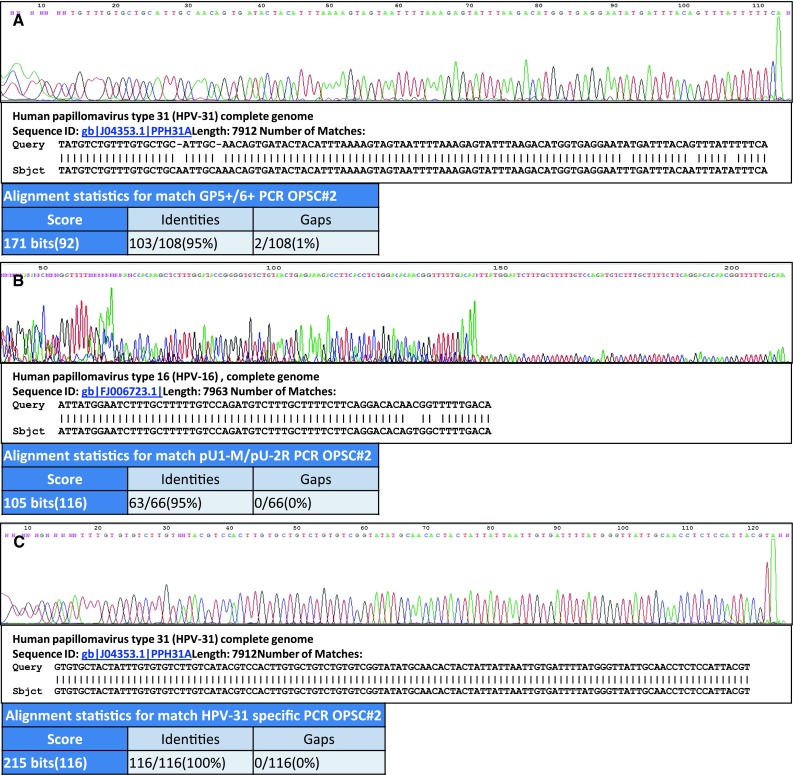Fig. 2.

Sequencing data from an oropharyngeal tumor from one patient [Lab Identifier #2 (Table 2)] demonstrating the detection of HPV-31 or HPV-16 dependent upon the PCR assay employed. a GP5+/6+ PCR electropherogram data together with NCBI BLAST search alignment showing 95 % homology with HPV-31 genome bases 6,577–6,684 with results suggestive of a possible HPV-31 sub-type. Homology with HPV-16 is 67/77 (87 %) of the shown sequence. b pU1-M/pU-2R PCR electropherogram data together with NCBI BLAST search alignment showing 95 % homology with HPV-16 genome bases 419–484 and suggestive of a possible HPV-16 sub-type. Homology with HPV-31 is 54/65 (83 %) of the sequence shown. [Note: Competing bases at the 5′- end of the sequence compromised full sequence BLAST analysis; this is most likely due to the shorter co-amplicons visible in Fig. 1b.] c HPV-31 specific PCR electropherogram data together with NCBI BLAST search alignment showing 100 % homology with HPV-31 genome bases 3,874–3,989. Homology with HPV-16 is 75/112 (67 %) of the sequence shown. ‘Query’ shows the sequence obtained from the patient sample; ‘Sbject’ shows the closest identity match reference sequence supplied by NCBI BLAST search
